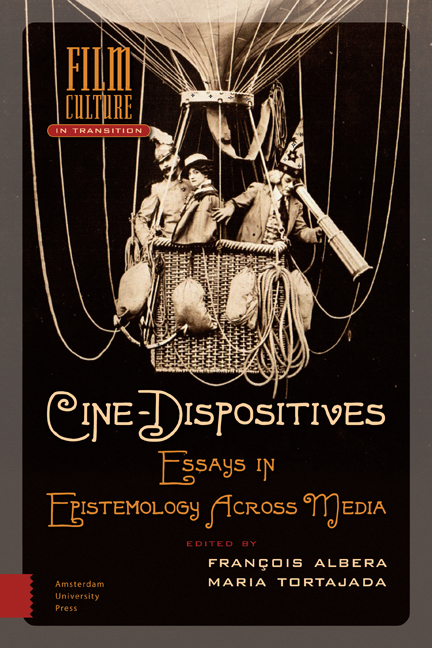Notes on the Bergsonian Cinematograph
Published online by Cambridge University Press: 10 February 2021
Summary
We know how Gilles Deleuze turned the commonplace inside out: Bergson, so it went, had “missed” cinema, contenting himself with a critique of its dispositive – the mechanism of the projecting device called the “cinematograph,” to be specific. Before the critique of the “cinematographic illusion,” developed for the most part in 1907 in Creative Evolution, there was indeed the doctrine of real movement, whose touchstone was the pure perception of movement as an act or progression rather than as a relation distributed in the spatial order. Movement unfolds in time, not in space. This bold thesis, exposed in Matter and Memory, gave a very singular conception of the plurality of rhythms of duration within an evolving universe. That Bergson thereby offered precious resources for thinking about cinema or the cinematographic experience was what Deleuze attempted to show in the brilliant analyses of Time-Image and Movement-Image. In so doing, he sanctioned another commonplace conveyed by critics and philosophers – namely, that cinema was, in essence, a Bergsonian art. One can see how far back the idea goes by looking at debates between Paul Souday, Marcel L’Herbier and Émile Vuillermoz in the late 1910s, at later texts by Elie Faure, Jean Epstein and Béla Balázs, or even at this pronouncement by a young Sartre in 1924: “Cinema provides the formula for a Bergsonian art. It inaugurates mobility in aesthetics.” More fundamentally, the assessment points to the musical paradigm that drives certain discourses on the flow of cinematographic images, but also on the contrapuntal or symphonic composition involved in editing. Deleuze chose the second direction and shifted the emphasis to a metaphysical ground, irreducible to any aesthetic of the flow. On the way, however, the dispositive was lost: it was about cinema, or rather about images and ideas “in” cinema, but no longer at all – or barely – about the cinematograph.
Beyond Deleuze's reappropriation, it may be useful, questioning Bergson's actual contribution to thinking on cinema, to go back to the point of view that was originally his, starting with a few obvious elements. First, it was never Bergson's ambition to think through cinema, a medium that he did not actually know very well, besides attending screenings like everyone else, so to speak.
- Type
- Chapter
- Information
- Cine-DispositivesEssays in Epistemology Across Media, pp. 115 - 128Publisher: Amsterdam University PressPrint publication year: 2015
- 1
- Cited by



